During the Japanese colonial period, the southeastern part of Tainan was known as Sinfeng District (新豐), and the toponym has been preserved in the name of Sinfeng Senior High School (新豐高級中學). Old Sinfeng is now divided into four Tainan districts. From west to east, they are Rende (仁德), Gueiren (歸仁), Guanmiao (關廟), and Longci (龍崎). Road 182, the area’s key transportation artery, cuts through typical semi-industrial suburbs before entering sparsely-populated hill country on the Tainan-Kaohsiung border.
Traditional religious culture thrives in Sinfeng, and this article introduces three temples which may interest those taking Road 182 to or from Neimen (內門) in Kaohsiung. We’ll start in the west, at the newest and least well known of the three.
WITH ITS BACK TO THE SEA
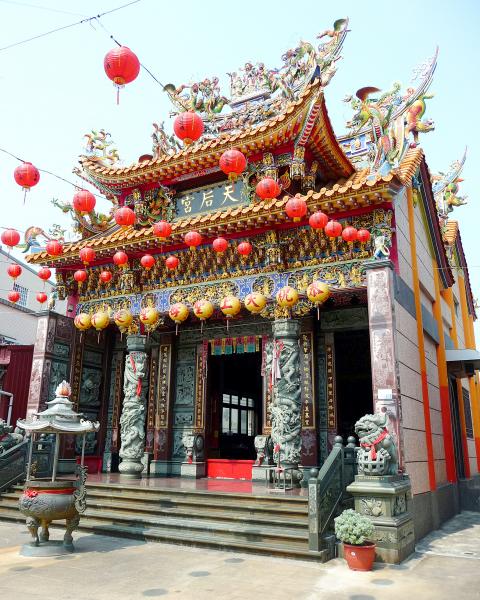
Photo: Steven Crook
Proving that the cult of Matsu (媽祖) is alive and well in Taiwan, this shrine to the sea goddess was founded as recently as 2004, and not completed until 2008. Tuku Tianhou Temple (土庫天后宮) is located a short distance inland off Freeway 1 in a neighborhood where several long-established families bear the unusual surname Lan (藍).
It’s sometimes said that every Matsu temple in Taiwan faces the sea, or the waterway by which Han settlers first approached that place. Every time I read such claims, I think of the east-facing Tuku Tianhou Temple. If it’s oriented toward the sea, it must be the Pacific Ocean on the other side of the Central Mountain Range. And not by any means does this modestly-sized hall of worship point toward a river that was navigable by the small, shallow-draft vessels used by Han pioneers.
The temple is at 33 Tuku 5th Street (土庫五街33號), 2.2km north of Road 182.
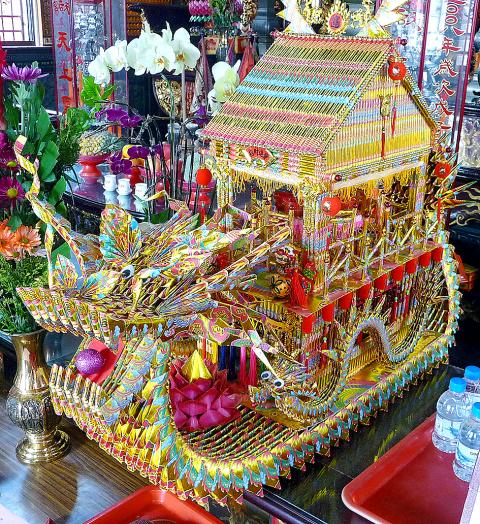
Photo: Steven Crook
CONFUCIANISM CELEBRATED
Near Rende Cultural Center (歸仁文化中心), Road 182 intersects with Road 177. Less than 500m up Road 177, on the right, there’s a large Presbyterian church. Next to it, but set further back from the road, Dunyuan Temple (敦源聖廟) has kept the flame of Confucian thought burning since 1927.
This appealing little building — no bigger than a traditional single-story house—is named for the Dunyuan Society (敦源社), a local group that has studied and taught the Chinese classics since 1883. Four decades later, the society raised funds to build this Confucian temple.
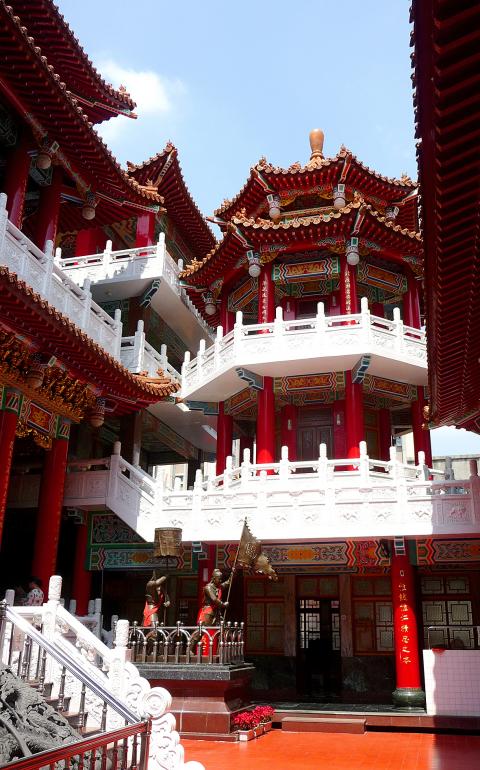
Photo: Steven Crook
The temple continues to be owned and managed by the Dunyuan Society, but the local government provides financial support. Government subsidies were especially needed after the Feb. 6, 2016 earthquake, during which serious damage was sustained and valuable items were looted from the ruins.
When no volunteers are on duty, the shrine is kept locked, but the spacious grounds are always open. An information panel profiles 17 local people who made something of themselves. On my first visit, the only name I recognized was Lee Ming-liang (李明亮), minister of the central government’s Department of Health from 2000 to 2002, and a prominent figure during the SARS crisis of 2003.
On my second visit, I noticed that another of the worthies had been elected mayor of Kaohsiung. Yang Chin-hu (楊金虎, 1898-1990) achieved this in 1968 as a member of the China Democratic Socialist Party (中國民主社會黨), one of two minor opposition groups permitted by the KMT during the Martial Law period. Yang was obviously an energetic individual: At the age of 72, and then again when he was 86, he married considerably younger women.
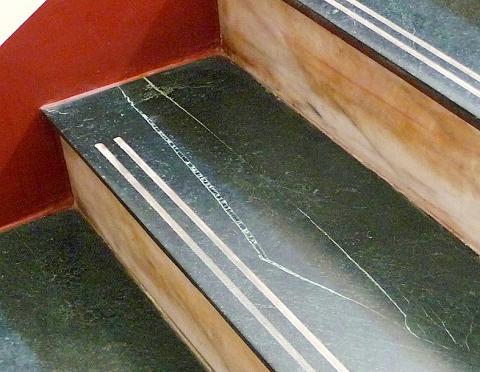
Photo: Steven Crook
The temple’s address is 122 Jhongsiao North Road (忠孝北路122號), Gueiren District.
GUAN GONG’S WEAPONRY
Shansi Temple (山西宮), 3km east of Dunyuan Temple, was established in 1718 as a shrine honoring the Chinese deity of war and martial arts Guan Gong (關公). In recent years, a notable attendee has been baseball great Wang Chien-ming (王建民).
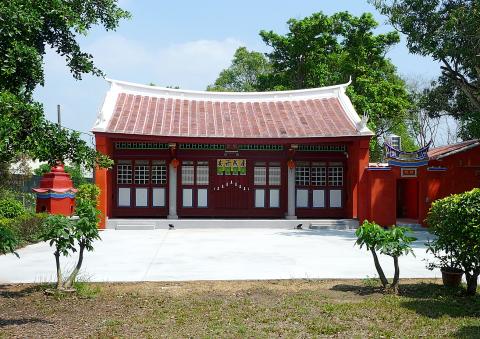
Photo: Steven Crook
The temple was rebuilt around 1762, but partly destroyed by fire during the Kuo Kuang-hou Incident of 1844. This uprising was the result of a taxation dispute. For generations, Taiwanese had paid taxes to the Qing court in the form of rice. However, as the population grew, grain surpluses shrank, so the authorities accepted cash in lieu of rice. Because the rice-to-cash exchange rate was determined by local officials, several officials used this as an opportunity to enrich themselves.
Kuo Kuang-hou (郭光侯), a local martial artist, led protests and petitioned senior officials. His efforts led eventually to the dismissal of one mandarin, yet — perhaps because he’d encouraged the peasantry to push back against corruption — he was sent into exile.
The Qing general who suppressed the rebellion sponsored rebuilding work, but in 1862 this place of worship was seriously damaged by one of the deadliest earthquakes in Taiwan’s history. More than 500 people were reportedly killed in the Tainan/Chiayi area.
During World War II, the temple was closed by the Japanese during the Kominka Movement (皇民化運動), an effort to shift Taiwanese culture closer to that of Japan. The colonial regime ordered that the shrine’s effigies be burned, but local people removed and hid the most important icons until after the war.
For all its history, the temple now sparkles with bright colors. The current structure was designed and completed between 1975 and 1982, a period when enthusiasm for “northern palace” architecture was at its zenith. But it’s not without its folk touches. If you look up on your right as you’re about to enter, just above head-height there’s a painting executed by Pan Li-shui (潘麗水, 1914–1995), one of Taiwan’s most famous temple artists.
Every 12 years, Shansi Temple sponsors a boat-burning festival. The most recent event was last year, so you’ll need to wait until 2030 if you want to witness this ritual.
Until then, the temple’s most unusual attraction is the “Twin Blades Doorway” (雙刀門). This is actually a stairway on the southern side of the building where, in 2006, cracks appeared in the shape of blades. Guan Gong is very often depicted holding a guandao (關刀), or a polearm with a hefty blade, so this was thought to be most auspicious. A sign points to the blades, but they aren’t protected from worshippers’ feet. Will wear and tear eventually make them unrecognizable? Before then, I guess, the temple will remove the marble sheets and put them somewhere out of harm’s way.
Shansi Temple is near Guanmiao’s main market at 37 Jhengyi Street (正義街37號).
Steven Crook has been writing about travel, culture, and business in Taiwan since 1996. Having recently co-authored A Culinary History of Taipei: Beyond Pork and Ponlai, he is now updating Taiwan: The Bradt Travel Guide.

In the March 9 edition of the Taipei Times a piece by Ninon Godefroy ran with the headine “The quiet, gentle rhythm of Taiwan.” It started with the line “Taiwan is a small, humble place. There is no Eiffel Tower, no pyramids — no singular attraction that draws the world’s attention.” I laughed out loud at that. This was out of no disrespect for the author or the piece, which made some interesting analogies and good points about how both Din Tai Fung’s and Taiwan Semiconductor Manufacturing Co’s (TSMC, 台積電) meticulous attention to detail and quality are not quite up to

April 21 to April 27 Hsieh Er’s (謝娥) political fortunes were rising fast after she got out of jail and joined the Chinese Nationalist Party (KMT) in December 1945. Not only did she hold key positions in various committees, she was elected the only woman on the Taipei City Council and headed to Nanjing in 1946 as the sole Taiwanese female representative to the National Constituent Assembly. With the support of first lady Soong May-ling (宋美齡), she started the Taipei Women’s Association and Taiwan Provincial Women’s Association, where she

Chinese Nationalist Party (KMT) Chairman Eric Chu (朱立倫) hatched a bold plan to charge forward and seize the initiative when he held a protest in front of the Taipei City Prosecutors’ Office. Though risky, because illegal, its success would help tackle at least six problems facing both himself and the KMT. What he did not see coming was Taipei Mayor Chiang Wan-an (將萬安) tripping him up out of the gate. In spite of Chu being the most consequential and successful KMT chairman since the early 2010s — arguably saving the party from financial ruin and restoring its electoral viability —

It is one of the more remarkable facts of Taiwan history that it was never occupied or claimed by any of the numerous kingdoms of southern China — Han or otherwise — that lay just across the water from it. None of their brilliant ministers ever discovered that Taiwan was a “core interest” of the state whose annexation was “inevitable.” As Paul Kua notes in an excellent monograph laying out how the Portuguese gave Taiwan the name “Formosa,” the first Europeans to express an interest in occupying Taiwan were the Spanish. Tonio Andrade in his seminal work, How Taiwan Became Chinese,